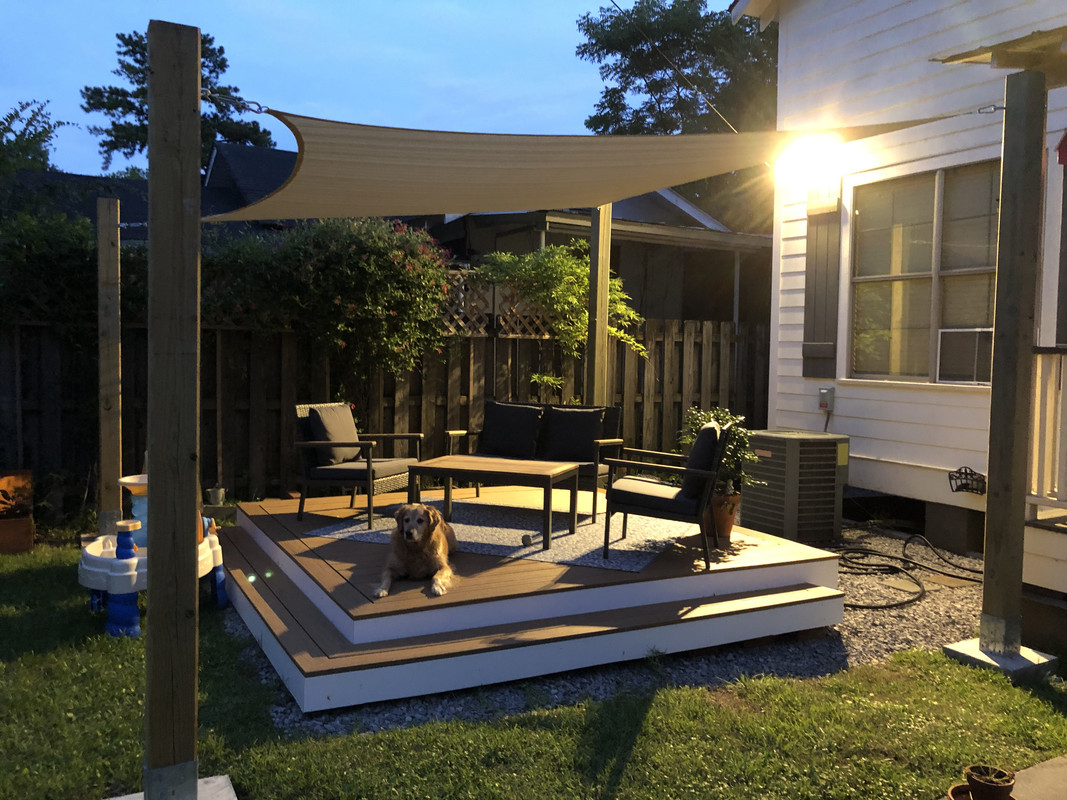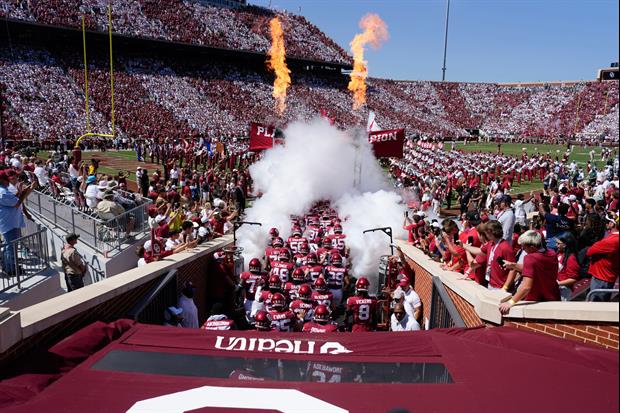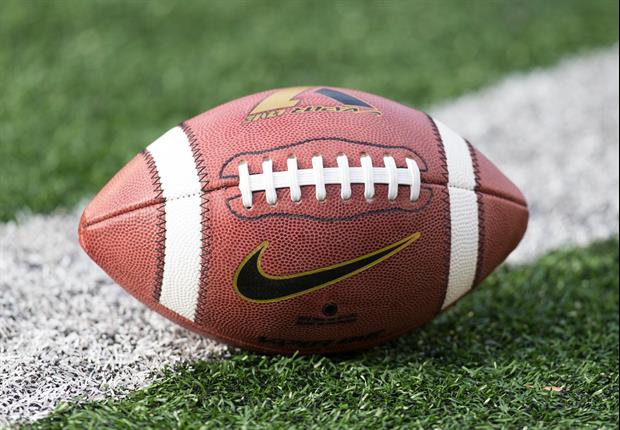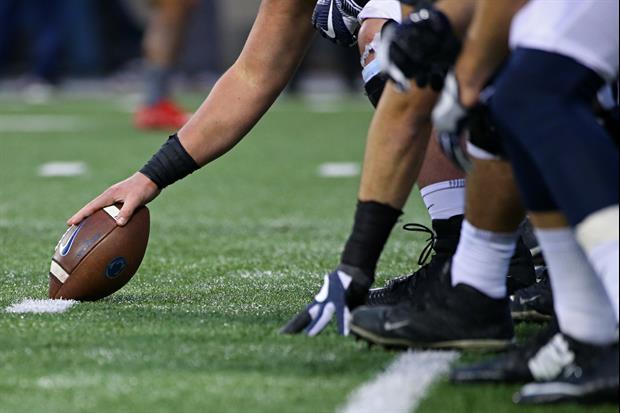- My Forums
- Tiger Rant
- LSU Score Board
- LSU Recruiting
- SEC Rant
- SEC Score Board
- Saints Talk
- Pelicans Talk
- More Sports Board
- Coaching Changes
- Fantasy Sports
- Golf Board
- Soccer Board
- O-T Lounge
- Tech Board
- Home/Garden Board
- Outdoor Board
- Health/Fitness Board
- Movie/TV Board
- Book Board
- Music Board
- Political Talk
- Money Talk
- Fark Board
- Gaming Board
- Travel Board
- Food/Drink Board
- Ticket Exchange
- TD Help Board
Customize My Forums- View All Forums
- Topic Sort Options
- Trending Topics
- Recent Topics
- Active Topics
stbtiger87
| Favorite team: | LSU |
| Location: | BR |
| Biography: | |
| Interests: | |
| Occupation: | |
| Number of Posts: | 80 |
| Registered on: | 2/5/2009 |
| Online Status: | Not Online |
Recent Posts
Message
re: PhD grads vastly outnumber jobs in academia
Posted by stbtiger87 on 6/24/25 at 10:01 am to DesScorp
TD loves to dog on PhDs but my experience in STEM is that academia really isn't the goal for most. I only know of one guy out of the dozens from my PhD program that went into academia. Most are working in in aerospace and defense and got their foot in the door because of grad school experience. For some career paths, a PhD is a way to get a leg up for jobs in cutting edge industries.
Being a professor means moving around a bunch to get experience and rub elbows with others within academia and working 80 hour weeks in your 30's. All to convince some old dudes later that you meet their criteria for tenure.
Being a professor means moving around a bunch to get experience and rub elbows with others within academia and working 80 hour weeks in your 30's. All to convince some old dudes later that you meet their criteria for tenure.
re: Terminally ill DoD black project engineer reveals reverse engineered man made UFO tech
Posted by stbtiger87 on 5/8/25 at 2:18 pm to RoyalWe
Yea, if that's real CFD of a transonic tic-tac, its bad real CFD of a transonic tic-tac. There's no business putting the boundaries that close.
re: Thoughts on Michael Jackson accusations?
Posted by stbtiger87 on 12/20/24 at 8:36 am to cubsfan5150
quote:
Which came first, the molester or the molestee? No pun intended.
Molest-tee-hee
re: Francine - Landfall in Terrebonne Parish as CAT 2 100 mph
Posted by stbtiger87 on 9/11/24 at 5:43 pm to gaetti15
quote:
Dudes in this thread have all aced Fluid dynamics and chaos theory.
The latter was probably called non-linear dynamics
re: Do normal people get PHDs?
Posted by stbtiger87 on 7/10/24 at 8:13 am to ECOTIGER
Grew up in St. Bernard.
Had a roommate at LSU who would have a few beers and start posting on our computers to see how fast he could get us banned. This was something like my fourth username on TD and ran out of ideas.
Had a roommate at LSU who would have a few beers and start posting on our computers to see how fast he could get us banned. This was something like my fourth username on TD and ran out of ideas.
re: Do normal people get PHDs?
Posted by stbtiger87 on 7/9/24 at 2:36 pm to theliontamer
I have one in engineering. The other people I know with Ph.D.'s definitely tend to run on the interesting side personality-wise but are generally well adjusted. I only know of one guy out of the dozens from school that went to academia. The vast majority in my field are working in areas related to defense, aerospace, or technical software.
My career day speech is that you don't do a Ph.D. because you want to make a boatload more money, you do it because you want an interesting career. Opportunity cost of being in school for that long vs making money for six to eight years is real. You do get free tuition and a stipend typically for engineering though.
My career day speech is that you don't do a Ph.D. because you want to make a boatload more money, you do it because you want an interesting career. Opportunity cost of being in school for that long vs making money for six to eight years is real. You do get free tuition and a stipend typically for engineering though.
re: Why are afterburners so loud?
Posted by stbtiger87 on 5/7/24 at 10:01 pm to Tempratt
Maybe more than you really want to know but overall sound pressure level (OASPL) scaling really strongly with the Mach number of the exhaust. Something like M^8 for subsonic jets down to M^3 to supersonic jets, I think it gets even worse with high temperature jet cores ( NASA Reference)
With that kind of scaling the amount of literal power in just the noise itself is scary.
With that kind of scaling the amount of literal power in just the noise itself is scary.
re: 2 Lot 400 parking passes for sale vs Ga St
Posted by stbtiger87 on 11/16/23 at 6:42 pm to LSUChamp5
Email sent
re: DARPA Selects Aurora Flight Sciences for Phase 2 of Active Flow Control X-Plane
Posted by stbtiger87 on 1/18/23 at 9:14 pm to ccomeaux
You can’t beat old aerodynamics/fluid mechanics videos from the 50s. YouTube
Fast forward to 9m45s and 20m40s to parts about active flow control using slots and jets like what this X plane will probably be using. Or watch the whole thing because these videos are awesome.
Fast forward to 9m45s and 20m40s to parts about active flow control using slots and jets like what this X plane will probably be using. Or watch the whole thing because these videos are awesome.
re: Where to find 4in metal poles for sun shade sail?
Posted by stbtiger87 on 8/1/22 at 12:08 pm to Beef Tips
quote:
You're not concerned with those wood 6x6s warping over time with the constant tension?
You're probably not wrong that they may warp some over the years but they've been loaded up for about a year and half now and haven't budged. When I load up the shade on the posts, the posts barely move. Probably doesn't hurt that they're loaded up along the diagonal of the post.
quote:
Im having a hard time wrapping my head around how those simpson bases are able to secure those 6x6 with no movement. You are far more brave than I attempting that.
Those things are beefy and can take some shite. You can only see about half of the base above the concrete and each one has twenty something screws in the post. I designed the pier similar to the recommended reinforced concrete installation from Simpson's catalog. My thought was that I might eventually go from a sail shade to a pavilion or pergola and I wanted something wooden that could handle the sail shade torque on it. Either way, a steel post is about as solid as anything you'll get if that's the answer. Just wanted to toss out there that there's a wood solution if you like the look better.
re: Where to find 4in metal poles for sun shade sail?
Posted by stbtiger87 on 7/31/22 at 9:50 pm to Beef Tips
I went down the sail shade rabbit hole last summer. Sounds like you got your plan straight, going with the 4” steel posts which will hold up really well. Just to throw it out there, doing 6” posts will hold up well with the tension and I liked the aesthetics a bit better. With my project I ended up anchoring the posts using some moment resistant Simpson post bases cast into 42” concrete piers. The post bases are expensive but with the price of the steel piping it might end up being a similar cost in the end.

I’ve stained them, strung up some lights, added caps and other crap at this point but gets the point across. End of the day if the posts rot out, I can just pull them out of the bases and replace them.

I’ve stained them, strung up some lights, added caps and other crap at this point but gets the point across. End of the day if the posts rot out, I can just pull them out of the bases and replace them.
re: When an object enters the atmosphere it burns up from compression, not friction.
Posted by stbtiger87 on 7/27/22 at 8:42 am to Korkstand
quote:
That's how I was thinking of it, and that's why I don't see much difference between increasing temperature by molecules bumping each other under compression, or friction shearing or "rubbing" each other.
Yeah I mean at some point its just a bunch of shite bumping into each other and transferring energy. I think the point to make here is: sure, if you zoom in close enough it a change in temperature all looks the same but in most physics problems the most important implications are because of the boundary conditions of the problem.
If this shite interests you, look up how gas dynamic lasers work. Runs the full gamut of temperature decrease due to expansion, non-equilibrium thermodynamics, and stimulated emission. The last one is waiting for an OT style mom joke.
re: When an object enters the atmosphere it burns up from compression, not friction.
Posted by stbtiger87 on 7/26/22 at 8:41 pm to Korkstand
The reason why it’s important to differentiate between heating due to friction and adiabatic compression is not only because mechanically they are different, in a fluid adiabatic compression is reversible and heat gained from friction is not. If there’s no friction, if you do some work and compress a piston and then let it go to its original state, the temperature and pressure will be exactly the same as it was before you compressed it. With friction, if you compress the piston and let it go, the friction will dissipate some of the work you put in and then some of the returning work the piston does when it expands and turns it into heat. The pressure and temperature will be slightly higher than it originally was. In the first case with no friction, there is no entropy generated, in the second case the entropy increased.
Metal will get hot when bent because of internal friction in the metal. When you work or compress a metal enough the internal grains or crystal planes in the material slip along each other and dislocate generating heat due to friction not because of any significantly increased KE. Never done much work with metals as a working fluid but yes I’d imagine the conventional wisdom would hold up. I’d put money the ideal gas law doesn’t work at those temperatures and molecular weights. Fluids and solid materials are thermodynamically different in the classical sense, shite gets harder when you start talking about toothpaste or glue.
Metal will get hot when bent because of internal friction in the metal. When you work or compress a metal enough the internal grains or crystal planes in the material slip along each other and dislocate generating heat due to friction not because of any significantly increased KE. Never done much work with metals as a working fluid but yes I’d imagine the conventional wisdom would hold up. I’d put money the ideal gas law doesn’t work at those temperatures and molecular weights. Fluids and solid materials are thermodynamically different in the classical sense, shite gets harder when you start talking about toothpaste or glue.
re: When an object enters the atmosphere it burns up from compression, not friction.
Posted by stbtiger87 on 7/26/22 at 3:50 pm to Penrod
quote:
Isn't it just semantics though? Doesn't compression just create more friction between air molecules, which creates heat?
Nope not semantics, compression doesn't create more friction between air molecules.
If you're in a diesel piston before the compression stroke, air is sitting in the piston at some temperature and pressure. That pressure is the force resulting from air molecules colliding with each other and the walls of the cylinder. When you compress the piston, the number of molecules stays the same but you reduced the room that they have to live in so they hit the walls of the piston more often and it higher velocities and as a result the pressure is higher.
Temperature is more complicated in terms of what it actually is but its related to the local kinetic energy (translational and rotational) of the molecules. When you compress the piston, because the molecules have less room they're going to collide more often and their velocity RMS goes up. Overall the temperature is going to increase either way because you put work into the air when you compressed it.
This video helps visualize it
re: When an object enters the atmosphere it burns up from compression, not friction.
Posted by stbtiger87 on 7/26/22 at 11:10 am to mdomingue
There's a bunch of misconceptions in this thread as it relates to compressible aerodynamics. There's three sources of temperature increase that people are talking about and getting confused.
There's adiabatic heating of the air upon re-entry that is caused by compression of the air at the leading edge of the body. Adiabatic heating is strictly an inviscid phenomena meaning it has no attachment to irreversible processes (at least within the limits of typical modeling), a.k.a. there's no friction involved. At really high temperatures due to compression this probably becomes more complicated due to the ionization of air and loss of heat due to radiation of the plasma but for all intents and purposes, no friction here. Effects here are very well represented by the Euler equations of fluid motion for a compressible gas, you'll get shockwaves and the full she-bang.
Getting into the frictional effects, there's the conversion of dilatational work of the air into heat via the bulk compression of the fluid and the conversion of shear in the air to heat via your typical viscous behavior in fluids. I think what this person is trying to say is that the latter shear driven frictional effects on the temperature are small compared to the adiabatic temperature increase and the dilatational work which I'd imagine is completely true when your pushing re-entry Mach No. ~20.
Thank you for coming to my TED talk.
There's adiabatic heating of the air upon re-entry that is caused by compression of the air at the leading edge of the body. Adiabatic heating is strictly an inviscid phenomena meaning it has no attachment to irreversible processes (at least within the limits of typical modeling), a.k.a. there's no friction involved. At really high temperatures due to compression this probably becomes more complicated due to the ionization of air and loss of heat due to radiation of the plasma but for all intents and purposes, no friction here. Effects here are very well represented by the Euler equations of fluid motion for a compressible gas, you'll get shockwaves and the full she-bang.
Getting into the frictional effects, there's the conversion of dilatational work of the air into heat via the bulk compression of the fluid and the conversion of shear in the air to heat via your typical viscous behavior in fluids. I think what this person is trying to say is that the latter shear driven frictional effects on the temperature are small compared to the adiabatic temperature increase and the dilatational work which I'd imagine is completely true when your pushing re-entry Mach No. ~20.
Thank you for coming to my TED talk.
re: Fans leaving early - Notre Dame comparison
Posted by stbtiger87 on 9/15/19 at 9:59 pm to hsgeoboy
So I actually have a similar perspective to OP - went to LSU for undergrad and finished my Ph.D. @ ND a few years ago. Notre Dame attendance has a few things going for it:
1. When the game starts, all on-campus tailgates at ND have to shut down. There's no going back to the Powalski's (or whatever midwest last name) tailgate to eat brats and simultaneously watch the Irish beat down the Lobos AND watch USC lose to BYU on the second TV.
2. There's not too many places to go right near campus to go do something else. Things improved massively during my tenure there but still there's only a handful of places (Brother's, O'Rourkes, the Backer, ?) right at the edge of campus to eat/drink/watch football.
3. Most of the undergrads live on campus so the alternative to leaving the game is to go back to the dorms. Added to this is since most of the students graduate in four years, about 50% can't legally go out and get boozed up.
4. Most of the non-student tickets are people from out of town. I knew a lot of the season ticket holders would come in from at least Chicago, a big part from well beyond there. If you're making the trip, you're watching the game.
Idk, overall its just a different atmosphere. Tailgating is a little stale sometimes - you could only set up tailgates in the parking lots, drinking games on campus are banned, but you really can't beat the scenery and the history. It felt like college football Disney World sometimes. Night games there where pretty tight though and things could get rowdy.
1. When the game starts, all on-campus tailgates at ND have to shut down. There's no going back to the Powalski's (or whatever midwest last name) tailgate to eat brats and simultaneously watch the Irish beat down the Lobos AND watch USC lose to BYU on the second TV.
2. There's not too many places to go right near campus to go do something else. Things improved massively during my tenure there but still there's only a handful of places (Brother's, O'Rourkes, the Backer, ?) right at the edge of campus to eat/drink/watch football.
3. Most of the undergrads live on campus so the alternative to leaving the game is to go back to the dorms. Added to this is since most of the students graduate in four years, about 50% can't legally go out and get boozed up.
4. Most of the non-student tickets are people from out of town. I knew a lot of the season ticket holders would come in from at least Chicago, a big part from well beyond there. If you're making the trip, you're watching the game.
Idk, overall its just a different atmosphere. Tailgating is a little stale sometimes - you could only set up tailgates in the parking lots, drinking games on campus are banned, but you really can't beat the scenery and the history. It felt like college football Disney World sometimes. Night games there where pretty tight though and things could get rowdy.
re: Man eats LSU students pet fish, charged 2 years later
Posted by stbtiger87 on 1/9/19 at 10:55 am to Splackavellie
quote:
One fish...two fish....
Eat fish...Poo fish...
re: China test fires massive new lCBM
Posted by stbtiger87 on 4/21/16 at 6:03 pm to Darth_Vader
Mach # = velocity/sound speed. The speed of sound is less in the upper atmosphere and the air is pretty rarified so attaining those speeds doesn't cause the same problems as it would at sea level.
Just look at the HiFiRE missle and X-51 programs - air-breathing hypersonic missles in the dense lower atmosphere is still a very active area area of research partially because of the high temperature you get from air friction on the missle surface.
Just look at the HiFiRE missle and X-51 programs - air-breathing hypersonic missles in the dense lower atmosphere is still a very active area area of research partially because of the high temperature you get from air friction on the missle surface.
re: China test fires massive new lCBM
Posted by stbtiger87 on 4/21/16 at 12:58 pm to Darth_Vader
Sound speed decreases with temperature and its pretty cold in the upper atmosphere. Mach 25 might be 19000 mph at sea level but when you see those Mach numbers in atmospheric re-entry its less than that.
re: OT'ers with South Bend experience....
Posted by stbtiger87 on 3/20/14 at 12:51 pm to Michael J Cocks
Conveniently located near the gigantic book store on the south part of campus there's the Eck Visitor Center that has a bunch of really cool historic Notre Dame sports stuff but that might be as close as it gets to a museum. Legend's, one of the on campus restaurants, has some jerseys hanging and some memorabilia. Be sure to catch the stadium and touchdown Jesus (Hesburgh Library) too.
You can usually take a tour of the stadium on Friday's and Saturday's but unfortunately it looks like they're not doing it this weekend because there's something going on.
You can usually take a tour of the stadium on Friday's and Saturday's but unfortunately it looks like they're not doing it this weekend because there's something going on.
Popular
 0
0











